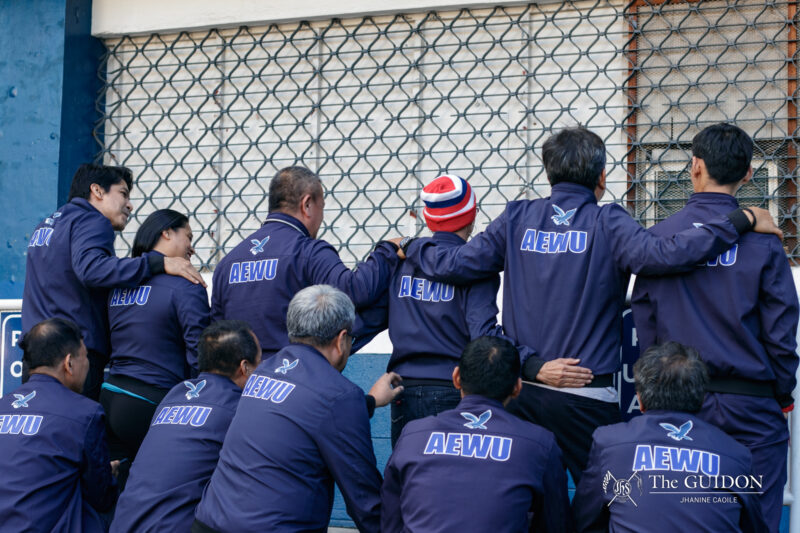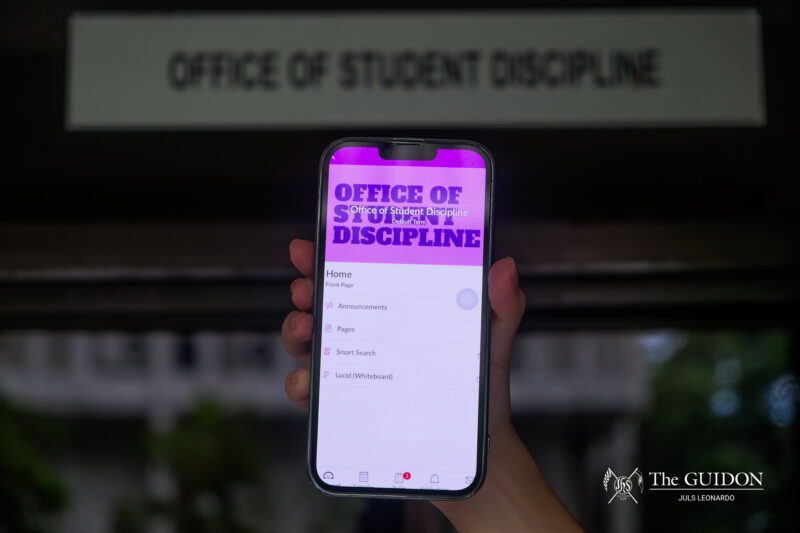![On the defensive. “It’s not perfect,” OSA Director Christopher Castillo says about the PMS, “but definitely... it [has become] much better.” Photo by Ryan Y. Racca](http://theguidon.com/1112/main/wp-content/uploads/2011/09/pms-article.jpg)
On the defensive. “It’s not perfect,” OSA Director Christopher Castillo says about the PMS, “but definitely... it (has become) much better.” Photo by Ryan Y. Racca
Forty-nine organizations, nine clusters, one council—and one administrative office that evaluates student groups based on success indicators.
The Office of Student Activities (OSA) implements the Performance Management System (PMS) annually.
More than just a measure of an organization’s success, though, the PMS serves a crucial function: it is used as the basis for an org’s reaccreditation (or non-reaccreditation) for the following year.
Bian Villanueva, Secretary-General of the Christian Union for Socialist and Democratic Advancement (Crusada), acknowledges that the PMS is an effective tool for guiding the LS organizations towards their goals.
However, he says that its rigid structure “cannot respond to the various needs of all organizations.” In light of this, Villanueva is calling for its revision.
“For example, if you’re from [the Faith Formation Cluster], your mission and vision includes love. How can you quantify love? [Through] the number of people who attend the prayer session? It misses the mark,” he explains.
But for Sanggunian President Drew Copuyoc, the PMS is an important organizational tool. “For me, it is something that will ensure the quality of extracurricular life.”
Nevertheless, the Sanggunian has detached itself from the PMS structure since the school year 2009-2010, in recognition of its nature as an elected body primarily “accountable to the student body.” Copuyoc is also supporting calls for the PMS to be transformed into a quality-based accreditation tool.
“How can one letter mark, a grade, really define the quality of events of an org, [or of its] member formation program? [PMS is trying] to define one year of org life with a grade,” he says.
Villanueva shares the same sentiments. “Be more qualitative. Not everything can be put into numbers.”
An experimental process
OSA Director Chris Castillo says that the PMS is mainly an accreditation tool that is useful in any setting.
He adds that it is used to assess if an organization should be allowed to carry the Ateneo name, and whether it bears the principles and values of the university.
From focusing on the question “What makes a good organization?” Castillo now wants to raise the question of “What makes a good Ateneo student organization?” This is part of the revisions OSA wants to formally enact into the PMS at the start of the next school year.
For the past two years, the imposed PMS models have been the same. Castillo notes that compared to the previous system, the current one does not have a midyear meeting, which is an assessment of an organization halfway through the school year.
This was replaced by the Project Appreciation Visit (PAV), in which OSA personnel themselves go to the organizational events. Castillo says that this makes feedback “more credible and [gives it] integrity.”
Castillo admits that the current PMS has defects and needs annual revision. “Like any other model, it’s not perfect, but definitely, in relation to the earlier versions of it, it’s much better.”
While the PMS was not intended for specific types of organizations, the challenge for instituting such a system lies in the fact that different organizations have different “indicators” of success.
“A constant challenge, for example, [is the Faith-Formation Cluster], since their final output, their type of work, is in a sense not as measurable,” Castillo says. Although he acknowledges this limitation, he says that over-customizing the PMS may remove any common standard for comparison.
OSA is currently developing a new system after consulting with various groups, such as the Ateneo Center for Organization Research and Development and representatives of the student body.
Plans of making this new system were brought up summer this year, says Castillo.
Yearlong cycle
The PMS, which has been implemented since 2007, is constituted of the year-round three-phase cycle all accredited Loyola Schools organizations have to undergo.
The first phase, which occurs from May to early June, is goal-setting. Organizations draw their thrusts and goals for the upcoming school year by filling out forms, which will be reviewed by the OSA officers.
From mid-June to February, organizations undergo the implementation phase, which allows them to realize their goals and programs for the whole school year. In the middle of this phase, OSA gives them their mid-year letters of feedback and recommendations.
Lastly, organizations are obliged to turn in their year-end status reports, which will be sent back to them with recommendations from OSA. These reports serve as a transitional document from the outgoing officers to the incoming ones.
With reports from AJ M. Santos







